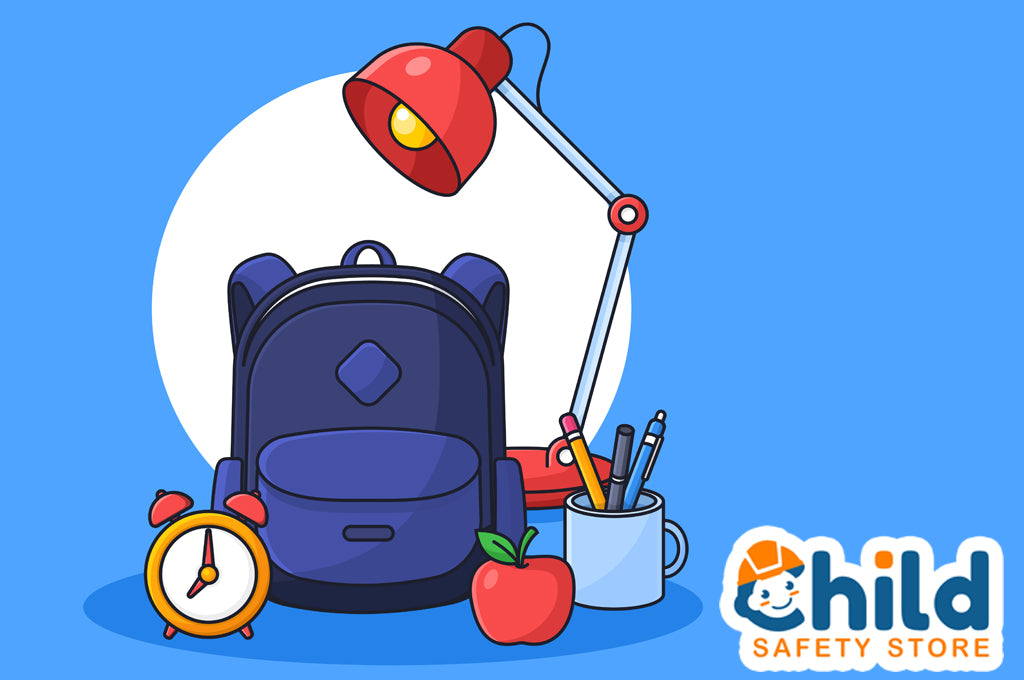
Back to School: Backpack Safety Tips
No matter how your kids are going back to school in 2020, chances are they will still need a backpack. With that in mind, let’s take a look at some backpack safety tips to help ease some of the (literal) pains of returning to school.
National School Backpack Awareness Day
Besides being “that time of year,” the inspiration for today’s article came from National School Backpack Awareness Day. This day was created by the American Occupational Therapy Association (AOTA) and occupational therapy practitioners, educators, and students across the country. The goal of the day is to help prevent the pain and injury that can come from heavy backpacks and bags. The 2020 event occurs today, September 16.
To learn more about National School Backpack Awareness Day, visit the official website.
Ignoring Backpack Safety Can Hurt!
Backpacks can be helpful to kids, but they can also cause harm when used improperly. Heavy backpacks can strain muscles and joints. This can lead to back pain and other injuries. During 2016-2018, there was an estimated annual average of 7,400 kids under 19 years old that were treated in emergency rooms for injuries related to backpacks, according to the U.S. Consumer Product Safety Commission.
Additionally, many kids wear their backpacks over just one shoulder. This lopsided way of wearing the pack may look “cooler” but it can cause undue strain on one side of the body. The child could develop lower and upper back pain and strain their shoulders and neck. This can also lead to poor posture.
Tips to Ease the Pain
Of course, all of this pain is not necessary. When it comes to backpack safety, a few simple precautions can do a world of good. Here are some ways to ease the strain of a cumbersome backpack:
Pick the Right Backpack
Backpacks are not one-size-fits-all. When shopping for a bag, parents should look for a sturdy yet lightweight bag with wide, padded shoulder straps. Additionally, a padded back and a weight-supporting waist belt can help to stabilize the wearer. It’s great if the bag is colorful or features your child’s favorite character, but the construction of the bag is even more important.
Keep it Light
Above all, the backpack should stay as light as possible. It is commonly recommended that people never carry more than 10% to 15% of their body weight in a backpack. To verify this, use a bathroom scale to weigh the pack before your little ones heads to school in the morning.
Wear Both Straps
As we mentioned above, kids often like to use only a single strap. This can lead to poor weight distribution. Wearing both straps will help a child stay upright and out of harm’s way.
Stay High and Tight
Another way kids like to wear their packs can be harmful. Keeping the backpack sagging and low on the back can seem more attractive to them, but it’s terrible for their backs. Instead, make sure your child keeps the straps tight to press the load against their back. Keeping it higher up puts less strain on their bodies and can help with balance.
Practice Proper Pickups
When it comes to backpack safety tips, don’t forget to teach your child the proper way to pick up their backpack from the ground. It’s important that they bend with their knees and grab the pack with both hands. Any hefty weight can cause undue pain, even for young backs. It’s better to be safe.

Additional Backpack Safety Tip: Pack a Backpack Card
Finally, we have one more backpack safety tip. Before sending kids out into the world, be sure to put a backpack card in their bag. These handy cards are a smart way to keep your child’s emergency information close at hand. In a nutshell, this card should contain the absolute most critical info about your little one, including:
- your child’s name
- their date of birth
- contact information for a parent or legal guardian
- info for an out-of-town contact person
- a home address
- the name and address of the child’s school
There’s plenty more that can be added, but the key is that the backpack card should be easy to find and read. To learn more, we’ve written a full article about backpack cards.
